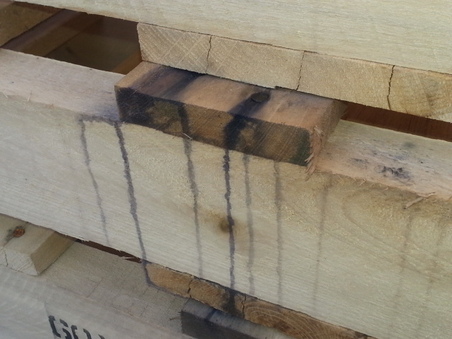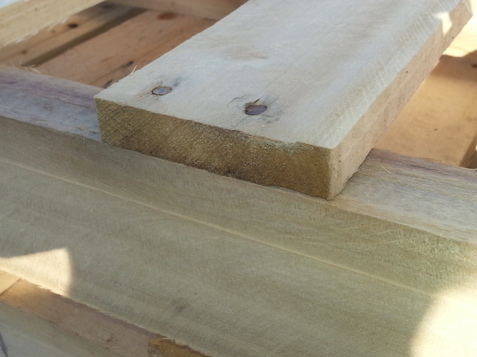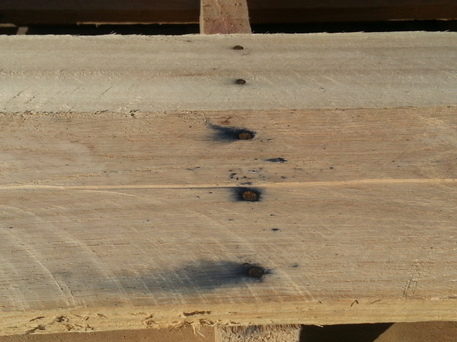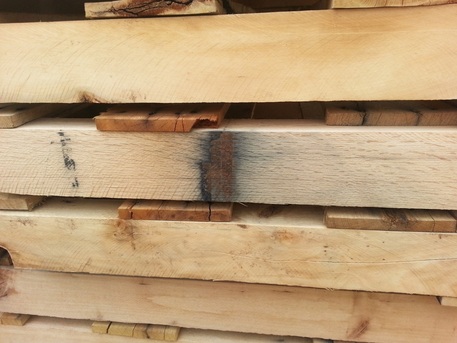|
There is a stain on my wood pallet, now what? Don’t panic. Stains on pallets are usually not a concern. Find out why and how stains happen. Let's take a closer look at wood. Wood is made up of:
With the exception of the water soluble extractives, these components are relatively stable when using wood for pallets. Except for oak, most wood species used in pallets have a low level of extractives. Oak is one of the strongest and most durable of the pallet materials. Unfortunately, oak also has some of the highest levels of these water soluble extractives. When oak comes into contact with metals like steel - and moisture is present - these extractives can react to create blue or black stains. Staining does not cause performance loss but it can be an issue with products sensitive to discoloration. Any of these metal contacts will create the stains:
For international shipments staining can become even worse. Required heat treating brings large amounts of moisture to the surface of the pallet. Stains are OK for most products. If you find the stains to be a problem, try these solutions:
Do you have a stain on your wood pallet that concerns you? Snap a photo and post it below. I will evaluate your stain and give you feedback on what you can do to avoid stains on your wood pallets.
Post by: John Clarke, Technical Director
1 Comment
Lena Dowdy
12/17/2016 09:37:06 pm
My husband installed some pallet wood in our closet and it's just beautiful but I am worried that some of it may have mold. He thinks it's just stains and dirty. What are your thoughts? How can I post pics for you to see.
Reply
Leave a Reply. |
Call Us: (410) 477-3000
Headquartered in Baltimore since 1918 Nelson Company is a trusted source for pallets & packaging materials.
NelsonCompany.com Is your packaging system costing more than it should? Find out how you can start saving with an analysis from Nelson Technical Center.
Our own web-based software for reverse distribution. Nelson-ART™ manages the entire life-cycle of your packaging assets.
|
Tech CenterThe Nelson Technical Center finds savings. Solutions for the design, supply and recovery of transport packaging.
(443) 649-1049 |
Wood SalesCustom wooden pallets and crates are our specialty. Ask us about wood manufacturing, repair and recycling.
(410) 477-3000 |
|








 RSS Feed
RSS Feed
